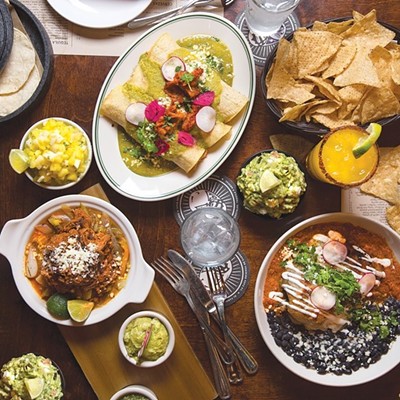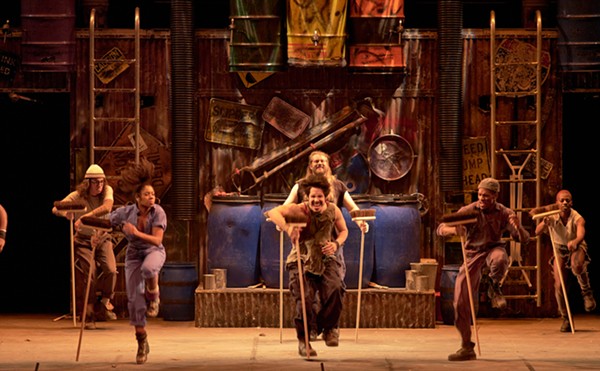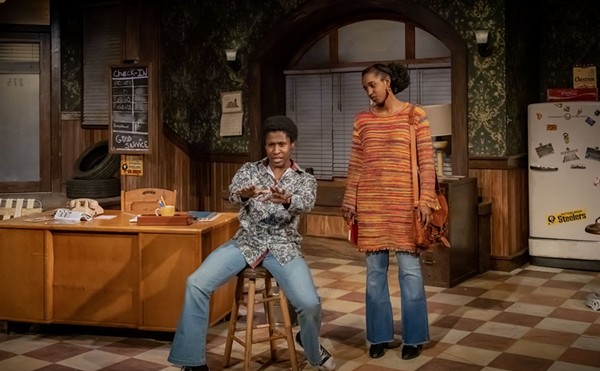The gods, goddesses and demons of America seem as numberless as the Hindu pantheon, and no artist has portrayed them as exhaustively as Andy Warhol. From Marilyn and Jackie to Buzz Aldrin, John Wayne to Mao, Annie Oakley to Mickey Mouse, Warhol in the course of his career produced a deck of oversized face cards, making a bid for a new kind of pop-aesthetic immortality.
For his 1981 series of silkscreen prints called Myths, he picked just 10 of our idols, including a haunting picture of himself in profile, which he called "The Shadow." The others are "Mickey Mouse" (famously Warhol's role model), "Dracula," "Santa Claus," "Howdy Doody," "Superman," "The Witch" (based on Margaret Hamilton's portrayal of the Wicked Witch of the West in The Wizard of Oz), "The Star" (a 1920s-era movie- queen type), "Mammy" (featuring the lips, eyes, bandana and hoop earrings of the racist stereotype, floating on an all-black surface) and Uncle Sam. As a tarot-like reading of major arcana, these cover a lot of archetypal ground, ringing with all kinds of historic and cultural associations. But Warhol's main interest was in superficiality. "I am a deeply superficial person," he famously joked.
The Myths series and 26 other large-scale prints make up the show Andy Warhol Prints: 1974-1986, Works from the Cochran Collection. On loan from the collection of Wesley and Missy Cochran of Georgia, thanks to the interest of their long-time friend, Cleveland Institute of Art curator and gallery director Bruce Checefsky, the exhibit will be at C.I.A.'s Reinberger Galleries through August 16. It comprises a distinguished, if often weird, group: John Wayne is here — and Dracula, Sitting Bull and George Armstrong Custer. Perhaps strangest are the images of a clearly troubled Santa Claus, a confused looking Uncle Sam and the nightmarish Mammy.
Cochran encountered the artist in person only once, at a show in 1980. He says he happened to be standing nearby as a photographer quickly went to work, snapping hundreds of shots — "Warhol didn't smile or change his expression; it was like taking pictures of a blank wall." Intrigued as much by Warhol's reticent brand of charisma as by his work, Cochran began acquiring the artist's large-format silkscreen works of the 1970s and 1980s. Like many passionate collectors of art, the Cochrans (Wesley is a stone mason, Missy a now-retired high-school teacher) weren't especially wealthy, but the idea of participating in art history has its own allure. "Collecting gives you a 50-yard-line seat," remarks Wes, who has never sold anything from the collections and says he doesn't follow the fluctuating market value of the art. "It wouldn't mean anything for me to sell something, 'cause I'd just go buy more. There should be a 12-step program."
It's just as well there isn't — for the artists' sake and for the audiences who eventually benefit from collectors' enthusiasms.












